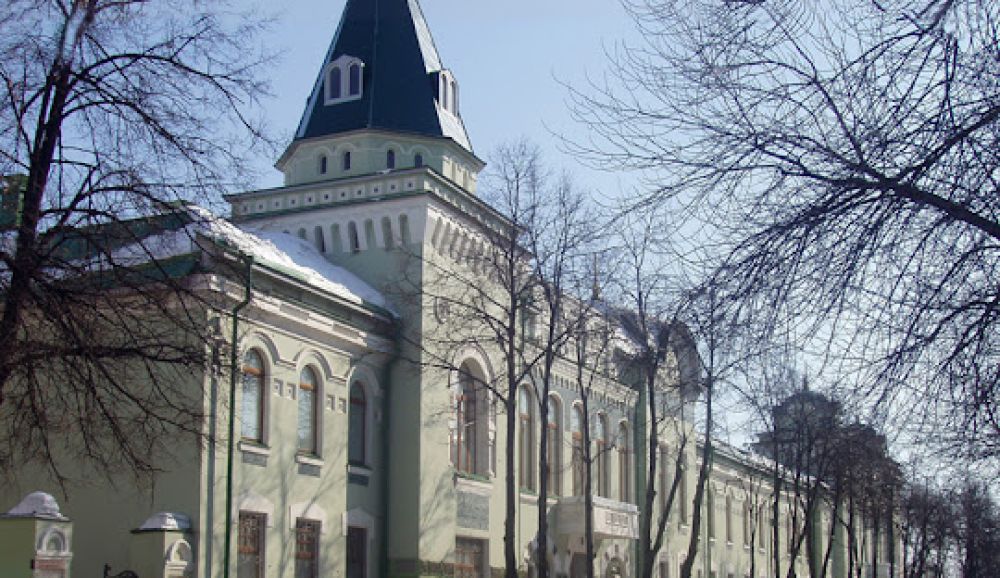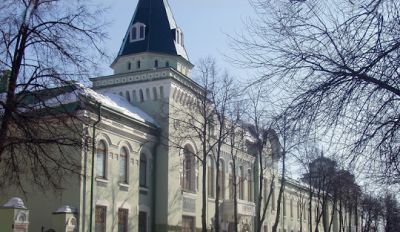

The National Museum of the Republic of Bashkortostan offers a fascinating Guided Historical Tour allowing visitors to immerse themselves in the rich cultural heritage and history of the region. The tour includes an in-depth narrative of Bashkortostan’s history, from ancient times through the Soviet era, and up to the modern day. As you walk through the museum, knowledgeable guides provide insights into the many artifacts, including ancient tools, traditional costumes, artworks, and domestic items that illustrate the life of the ethnic groups in Bashkortostan. This tour is an excellent opportunity to learn about how the region's culture has been influenced by its geography, the various populations that have lived there over the millennia, and the trade routes that crossed this territory.
For those interested in hands-on experiences, the Bashkir Folk Art Workshop at the National Museum is a perfect choice. Participants will learn about the ornate and vibrant folk art traditions of the Bashkir people, known for their intricate designs and colorful patterns. The workshop provides a practical opportunity to engage with local customs by creating your own piece of folk art to take home. An experienced craftsperson leads the class, ensuring that each visitor learns about the symbolism behind the designs as well as the techniques used to create them. Participants leave with not only a beautiful handmade souvenir but also a greater appreciation for the Bashkir artistic legacy.
The History of Ufa Exhibit is a permanent display that delves into the storied past of the capital city of Bashkortostan. This exhibit provides a comprehensive look at the development of Ufa from a small fortress town to the bustling city it is today. Through an array of photographs, documents, and relics from various periods, visitors can trace the urban, cultural, political, and economic evolution of the city. The exhibit also features interactive elements, such as multimedia presentations and models of historical buildings, bringing the story of Ufa to life. This activity is perfect for anyone interested in urban development and the factors that shape a city's identity over time.
The Prehistoric Bashkortostan exhibit takes visitors on a journey back to a time long before recorded history. Through this exploration, one can discover the earliest inhabitants of the region, encountering fossils, ancient flora and fauna, and reconstructions of prehistoric scenes. The exhibit features various artifacts from archaeological digs, including tools, pottery shards, and remnants of early settlements. Informative plaques and interactive displays help to paint a vivid picture of what life would have been like in this area thousands of years ago. This educational experience is particularly suitable for school groups, families, and anyone with an interest in archaeology and early human history.
Nature lovers and environmental enthusiasts will find the Nature of Bashkortostan Exhibition particularly compelling. This feature of the museum showcases the diverse ecosystems of the region, from the Ural Mountains to the vast steppes. Within this exhibit, you'll find detailed dioramas, complete with native plant and animal species. The exhibition does not only display taxidermied animals but also offers insight into the conservation efforts taking place in Bashkortostan to preserve these natural wonders. Visitors will leave with a better understanding of the local environment and the importance of sustaining the delicate balance of these ecosystems for future generations.
Delve into the sartorial world of the Bashkir people with the Traditional Bashkir Clothing Exhibit. This display is dedicated to the distinctive textiles and clothing that form an integral part of the Bashkir cultural identity. The beautiful embroidery work, vibrant colors, and unique accessories highlight the craftsmanship and artistry that go into traditional Bashkir dress. The exhibit provides explanations for various garments and their uses, from daily wear to ceremonial outfits. Visitors can observe the influence of other cultures on Bashkir attire throughout history and learn how clothing can reflect social status, lifestyle, and regional variations within Bashkortostan.
The Art of Bashkir Jewelry Making is not only an exhibit but also an interactive experience at the National Museum. It showcases the exquisite craftsmanship of Bashkir jewelers, known for their detailed silverwork and use of semi-precious stones. Visitors can observe a collection of traditional jewelry pieces that indicate social and marital status among the Bashkir people. The workshop component of this activity allows participants to try their hand at crafting a simple piece of jewelry under the guidance of a skilled artisan, providing insight into the techniques and symbolic meanings behind the adornments. This activity is particularly popular with those who appreciate fine craftsmanship and want to experience a deeper connection with local traditions.
The Soviet Era in Bashkortostan is an enlightening exhibit that examines the profound impact of the Soviet Union’s policies and ideology on the region. The display highlights the significant social and economic changes that took place during this period, including industrialization, collectivization, and cultural shifts. It features a collection of Soviet propaganda, personal narratives, photographs, and everyday objects that tell the story of life in Bashkortostan under Soviet rule. Visitors gain a deeper understanding of how the local population adapted to and resisted these changes. This exhibit is a must-see for those interested in 20th-century history and the complexities of life under the Soviet regime.
Immerse yourself in the vibrant culture of Bashkortostan with a Live Folk Music and Dance Performance at the National Museum. Featuring talented local musicians and dancers, this event showcases traditional Bashkir musical instruments, folk songs, and dances. The spirited performances are not only entertaining but also provide a rare opportunity to witness the region's intangible cultural heritage. As the sounds of the kurai flute and the rhythm of the dances fill the air, you can feel the deep connection the Bashkir people have with their music and traditions. This activity is especially enjoyable for those looking to experience a slice of the local culture in a lively and authentic setting.
At the Permanent Religious Artifacts Exhibition in the National Museum, visitors have the chance to explore the spiritual and religious history of Bashkortostan. The exhibition features religious texts, icons, and artifacts from various faiths that have coexisted in the region, including Islam, Christianity, and indigenous beliefs. The artifacts on display provide an insight into the religious traditions, rituals, and artistic expressions of these faiths. Careful explanations accompany each piece, offering context and highlighting the interwoven nature of religion and culture in Bashkortostan. This exhibit is thought-provoking and a testament to the region's diversity and history of religious tolerance.
